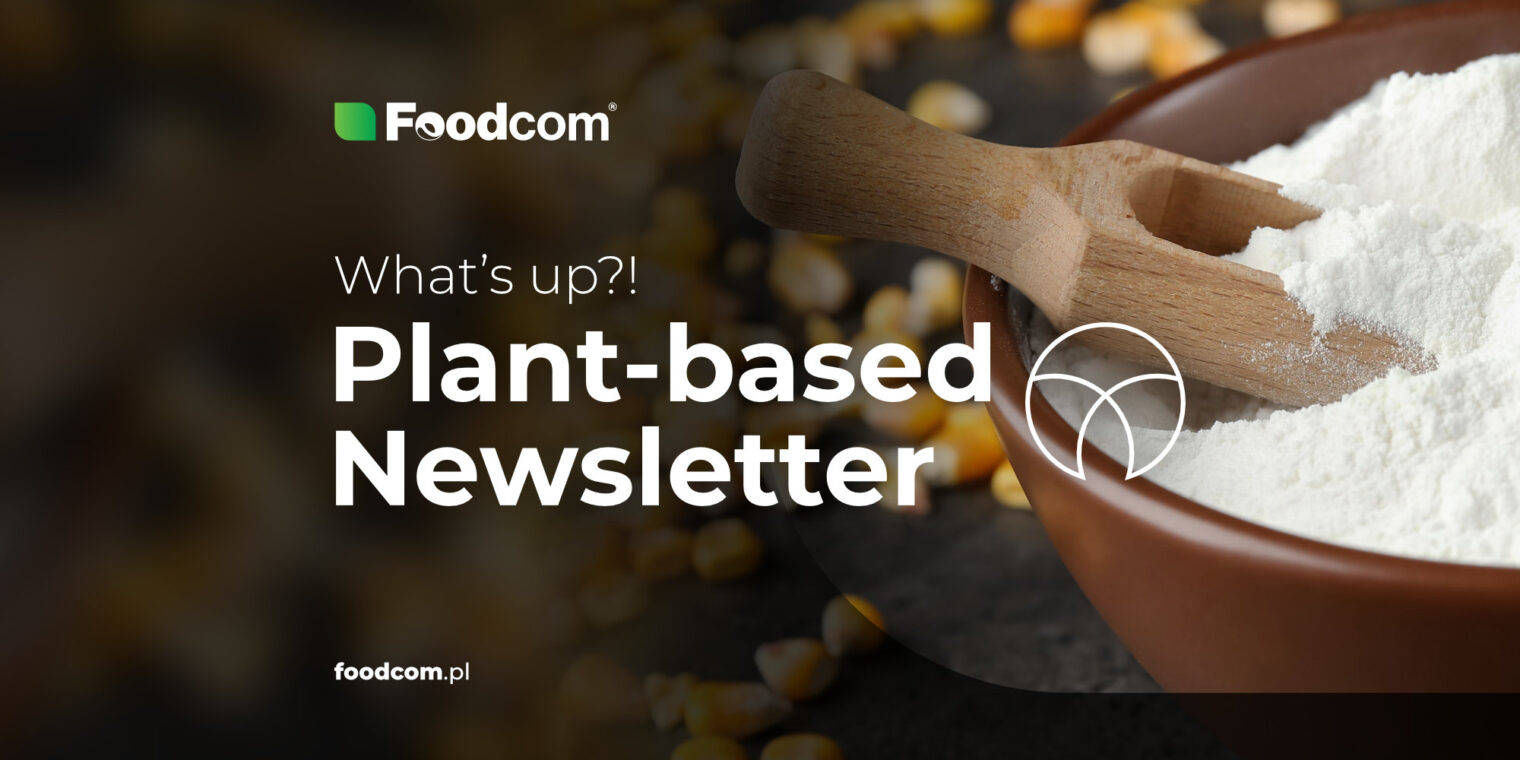A warm welcome to the year 2023! Your favorite Plant-Based Newsletter is back. The beginning of the year is usually a time for predictions and discussions about the future, so why don’t we think about it together?
More and more people are giving up meat or reducing their meat consumption, so it’s almost certain that demand for plant-based proteins will increase. It’s a similar story with the consumption of milk and dairy products. The growing interest in plant-based products is what this is all about, right?
It’s hard to predict what will happen next, but recent events suggest it will be all about energy and gas prices, especially when it comes to powdered products.
And what’s been happening in the plant-based industry? As always, you’ll read about it later in the newsletter. Spoiler alert: it’s definitely worth reading on.
Natural Sweeteners
In recent weeks, interest in natural sweeteners has increased as everyone has returned to business after the holidays. At the same time, demand is expected to decline in the coming weeks after reaching its peak before the holidays due to increased production of cravings. More and more companies are choosing to purchase Dextrose from alternative sources as prices for European sweeteners remain high. The situation in the Maltodextrin market is analogous to that of Dextrose. Prices are rising, and this trend will most likely continue, even if they are too high for many buyers. Both Fructose and Saccharose are available in sufficient quantities to meet demand.
Native Starches
There are inquiries about Native Corn Starch. Many buyers, especially food manufacturers, want year-round contracts. It is unlikely that the price will fall until the next harvest; most likely it will stabilize, perhaps even rise. Availability of Native Potato Starch is low (but that probably does not surprise anyone anymore). Many large producers are now sold out until the next harvest. Native Wheat Starch is now sought primarily by paper manufacturers. Native Waxy Corn Starch is available in very limited quantities, and its procurement is primarily a challenge for modified starch manufacturers.
Modified Starches
Prices for Modified Corn Starch (made from Native Waxy Corn Starch) are rising month by month. The water-soluble variety is the most popular, probably because it requires less energy to process than other varieties. Because little Native Potato Starch is available on the market, the situation with Modified Potato Starch is similar or even more difficult, since the former is the raw material for its production. Some Native Potato Starch manufacturers are considering modifying the product themselves to sell it at a higher margin.
Proteins
Vital Wheat Gluten prices are rising because the quality and protein content of wheat currently available on the market is lower than expected. As a result, bakeries will reach for Vital Wheat Gluten in large quantities. This is likely to be particularly noticeable in Europe, where the consumption of different types of bread is deeply rooted in lifestyle habits. Some feed-grade Corn Gluten Meal is sold out until the next harvest. This is the case with most major producers. Inquiries for this raw material come mainly from manufacturers of feed, aqua feed and pet food. Demand for Potato Protein has increased, and so has the price. End users are largely not accepting it. Although this year’s potato harvest was relatively poor in most of Europe, quite a lot of buying and selling can be found in the north of the continent.
What else?
Europe
By December 28, 2022, 22 million tons of grain were exported from Ukraine, 30% less than in the previous season (the reasons are probably obvious)
Among them, 8.2 million tons of wheat were exported, 48% less than the previous year. Barley exports fell by 69% to 1.6 million tons. One can only hope that the ‘turbulence’ (what a nice euphemism) will soon come to an end.
Switzerland will donate an additional 14.5 million Swiss francs to combat the global food crisis
The current difficult political and economic situation means that many millions of people around the world are affected by the food crisis. The Swiss government has decided to take additional measures and increase its funding for the World Food Program by a further 14.5 million Swiss francs.
The latest forecasts predict that Ukraine will harvest only 40 million tons of grain in 2023
Ongoing hostilities with related logistical and energy problems make grain production almost unprofitable. In 2023, the country’s total harvest will fall by three times the pre-war record level, from nearly 120 million tons to 40 million tons. This is inevitable given the current situation.
The Americas
Brazil sets a record for wheat production
The 2022 harvest has been completed in Brazil, and the summary states that a record crop size was achieved for the second consecutive year. A record 9.5 million tons of wheat were produced in 2022, a 24% increase over 2021. Brazil has set a goal of achieving wheat self-sufficiency by the end of the decade, but experts say it could be much sooner. Wheat to go, Brazil!
Canada is expected to become a major wheat supplier in the first half of the year
Favorable weather events have created excellent conditions for grain growth, with a near-record crop expected for the 2022/2023 season. As a result, Canada will become a major wheat supplier, in part due to limited supply in key markets such as Argentina, the U.S. and the EU. Canada currently appears to have only the Wheat Dreams.
Tightening grain supplies around the world are prompting more and more companies to develop hybrid wheat
This new type of hybrid wheat, which is available to farmers in the U.S., could help ease fears about genetically modified crops. Syngenta has already developed its wheat variety, while BASF and Bayer’s varieties are expected to be developed in the near future. More food for more people? Yes, please!
Asia & Oceania
As they say, new year, new me. But in most cases they just say that
In Indonesia, interest in apples and oranges imported from China has increased recently, which is typical for this time of year. The increase in demand is due to the upcoming Chinese New Year and is mainly driven by the Chinese minority, which constitutes about 5% of Indonesia’s population.
Bangladesh Rice Research Institute has launched a mobile application called Rice Solution
The aim of this rice pest management system is to identify the disease by uploading photos of infected rice plants from the rice field to the app. Data collection is mainly based on advanced sensors. Amazing how fast technology is advancing!
Japan is changing its approach to grain imports
Until now, the country has relied mainly on supplies from the U.S., but a weaker yen and problems with logistics and the 2022 U.S. harvest have led Japan to look for grain from other sources. In November, Australia became the top wheat exporter to Japan. How will the situation evolve? It is certainly worth watching closely.







